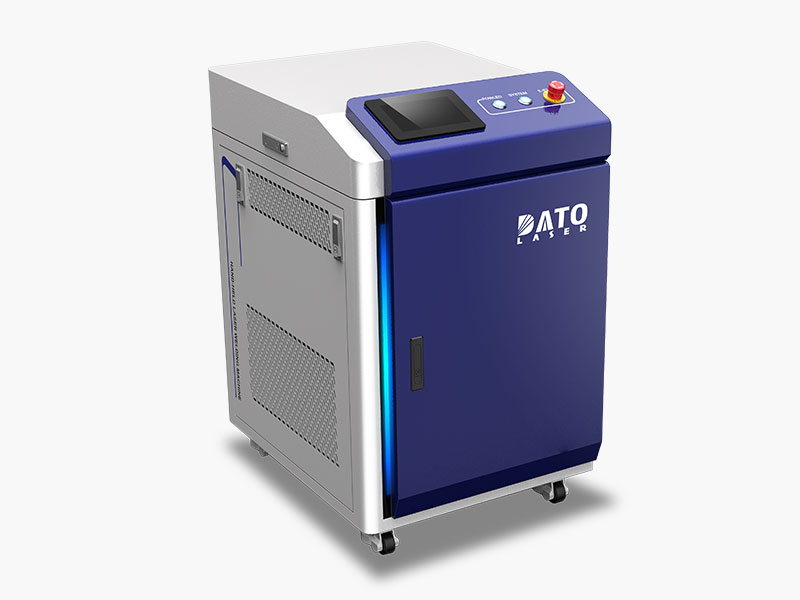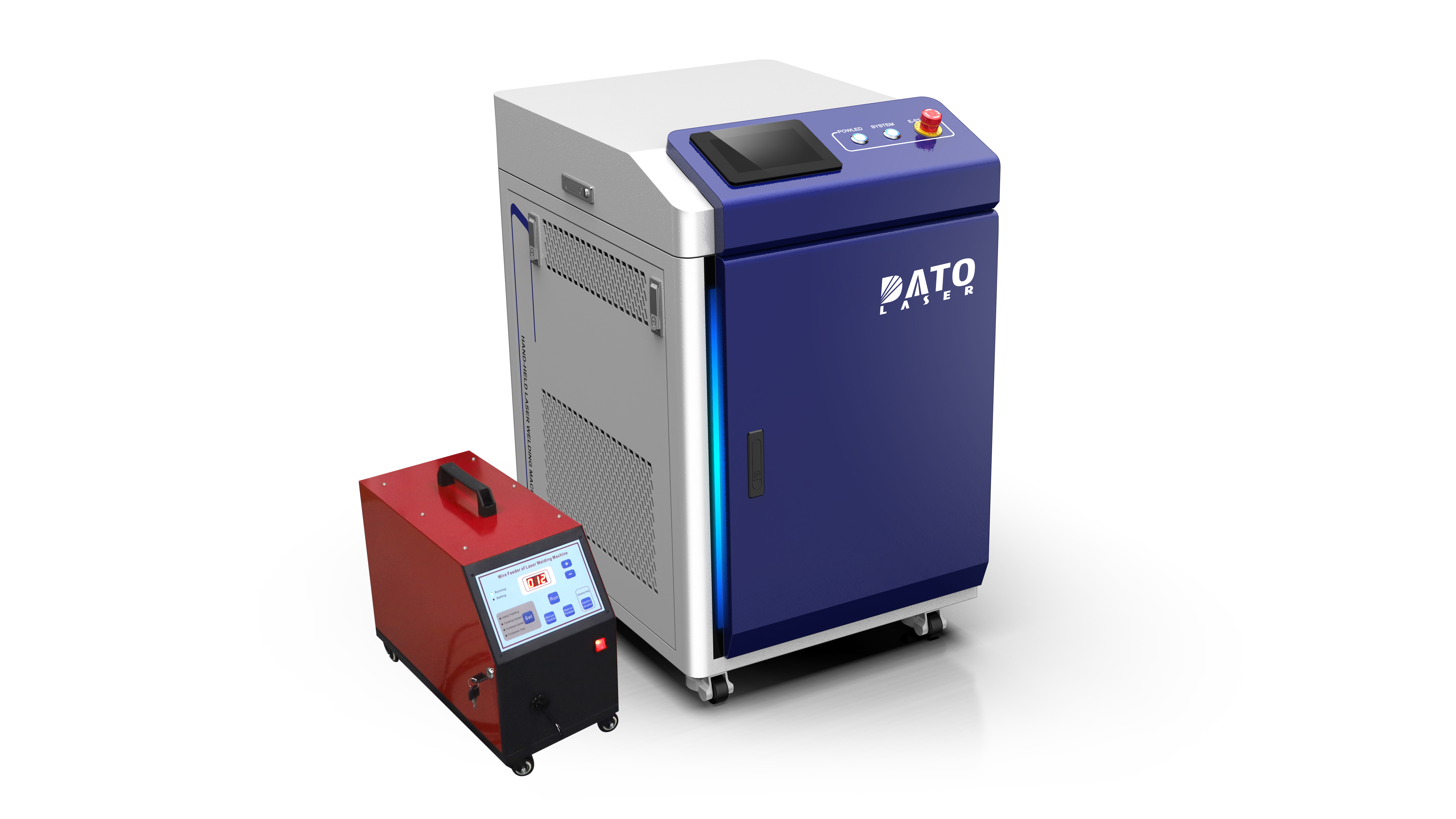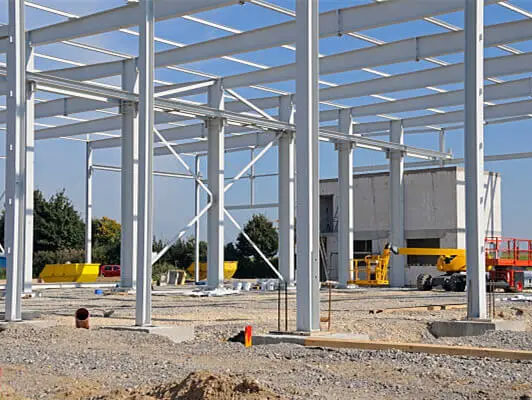Is Laser Cleaning Safe for Metal Surfaces?

Exploring the Safety, Precision, and Industrial Benefits of Laser Surface Cleaning
In today’s fast-paced industrial world, where quality, efficiency, and sustainability are top priorities, manufacturers are constantly seeking better ways to clean metal surfaces without compromising material integrity. Laser cleaning has emerged as a revolutionary solution for rust removal, oxide elimination, coating preparation, and contaminant cleaning—all without using chemicals or abrasives.
But a common and important question remains: Is laser cleaning safe for metal surfaces?
At DATO and Leapion, we are dedicated to providing cutting-edge laser solutions that combine performance, safety, and reliability. With our expertise in fiber laser cutting machines, tube laser cutters, sheet and tube laser systems, laser welding, and laser cleaning machines, we ensure that businesses across industries benefit from both innovation and peace of mind.
In this comprehensive article, we will dive deep into the science behind laser cleaning, assess its safety for different metal surfaces, and explore why industries across the globe trust this technology for critical applications.
Understanding How Laser Cleaning Works on Metals
To evaluate safety, it is essential to understand how laser cleaning interacts with metal surfaces. Laser cleaning works by focusing a high-energy laser beam onto a contaminated surface. The laser’s energy is absorbed by contaminants such as rust, oil, paint, or oxide layers. These materials vaporize or are ejected from the surface through micro-explosions, leaving the base metal clean and untouched.
Unlike abrasive blasting or chemical stripping, laser cleaning is a non-contact, non-abrasive process. It uses no solvents, does not involve mechanical wear, and does not etch or corrode the surface when operated under proper parameters.
Modern laser cleaning machines, such as those developed by DATO and Leapion, feature adjustable power levels, pulse duration, and scanning speed—ensuring the beam only removes unwanted layers while preserving the integrity of the metal beneath.
The Safety of Laser Cleaning for Common Metal Types
Stainless Steel
Stainless steel is widely used across medical, automotive, and construction industries due to its corrosion resistance and sleek finish. Laser cleaning is exceptionally safe for stainless steel surfaces when using controlled energy levels. It removes rust, weld oxides, grease, and contaminants without discoloration or pitting. Pre- and post-weld laser cleaning is especially effective for maintaining stainless steel weld quality and hygiene standards.
Carbon Steel
Carbon steel, commonly found in heavy machinery, pipelines, and structural applications, often suffers from rust and oxidation. Laser rust removal for carbon steel is one of the most frequently used applications. By using pulsed fiber lasers with precision control, the process targets only the oxidized layer without damaging the underlying steel. This makes laser cleaning a preferred method over abrasive blasting, which can roughen the surface and reduce mechanical tolerances.
Aluminum and Its Alloys
Aluminum surfaces, often found in aerospace, packaging, and automotive industries, require delicate handling during cleaning. Traditional abrasive methods can easily scratch or warp aluminum. Laser cleaning, on the other hand, is safe for aluminum when lower energy settings are used. It effectively removes oxide layers, paint coatings, and adhesive residues while maintaining the metal’s original reflectivity and surface texture.
Copper and Brass
Copper and brass are conductive, soft, and often used in electrical and decorative applications. Laser cleaning can safely remove oxidation, thermal discoloration, and surface contaminants without deforming or eroding these soft metals. Precision is key, and fiber lasers are ideal because they allow the user to fine-tune pulse energy and speed to avoid overexposure.
Titanium and High-Value Alloys
In industries like aerospace and medical device manufacturing, titanium and nickel-based alloys are used where precision and surface integrity are non-negotiable. Laser cleaning provides a safe and accurate way to clean these surfaces, especially before welding or coating, ensuring improved adhesion and bonding without surface degradation.

Factors That Influence Laser Cleaning Safety on Metals
Laser Power and Frequency
The key to safe laser cleaning lies in correct laser parameter settings. Power levels that are too high or pulse frequencies that are too aggressive can potentially heat the surface beyond the threshold, leading to minor discoloration or surface roughness. However, with modern laser cleaning machines that offer precise parameter adjustment, these risks are easily mitigated.
At DATO and Leapion, our machines are engineered with smart control systems that allow operators to fine-tune laser power, pulse duration, and scanning patterns. This ensures consistent cleaning results across all metal types without risking damage to the base material.
Pulse Type: Pulsed vs Continuous Wave Lasers
Laser cleaning machines generally use either pulsed fiber lasers or continuous wave (CW) lasers. Pulsed lasers are preferred for surface cleaning because they deliver short bursts of high energy that vaporize contaminants without generating sustained heat. This minimizes thermal stress and distortion, making pulsed laser cleaning the safest option for delicate or thin metal surfaces.
CW lasers, while powerful, can cause localized heating if not managed correctly. They are typically used for deeper material removal or high-speed industrial cleaning on robust materials.
Operator Skill and Application Method
Proper training and application techniques are crucial to ensuring surface safety. Skilled operators know how to adjust laser settings based on the type of contamination and the base metal involved. At DATO and Leapion, we provide full technical support, training, and application guidance to ensure optimal performance and safety for every customer.
Advantages of Laser Cleaning Over Traditional Methods
Non-Destructive Surface Treatment
One of the primary reasons industries are adopting laser cleaning is its ability to clean without harming the substrate. Unlike sandblasting, which can erode or roughen the surface, laser cleaning maintains metal surface properties. This is essential in industries where tolerances, conductivity, or surface finish must remain unchanged.
No Chemical Exposure or Residue
Traditional methods often rely on solvents, acids, or caustic agents to clean surfaces. These not only pose risks to workers but can also lead to corrosion if not thoroughly removed. Laser cleaning eliminates the need for chemicals, making it safer for both operators and the environment.
Reduced Mechanical Wear
Mechanical methods like wire brushing or grinding introduce friction that wears down the metal over time. Laser cleaning is a contactless process. There are no tools touching the surface, which preserves the part’s longevity and reduces wear-related costs.
Precise and Selective Cleaning
Laser systems can be programmed or guided to clean specific areas with pinpoint accuracy. This selective approach prevents accidental damage to nearby components or sensitive areas, particularly in electronics, mold maintenance, and aerospace part cleaning.
Applications Where Laser Cleaning Safety Is Critical
Laser cleaning has become a trusted method in many applications where material integrity is vital:
Pre-weld and post-weld cleaning in shipbuilding, construction, and pipeline assembly
Paint and oxide removal in automotive body preparation
Mold cleaning in plastic injection and rubber manufacturing
Restoration of metal artworks and historic sculptures
Surface preparation before bonding or coating in electronics and aerospace
Routine maintenance of production machinery where cleanliness affects precision
In each of these applications, the goal is to clean thoroughly without introducing stress, deformation, or chemical contamination. Laser cleaning, when done correctly, is the safest method available for such high-value surfaces.

Laser Cleaning Machine Safety Certifications and Industry Standards
At DATO and Leapion, our laser cleaning machines are designed and manufactured according to strict international safety standards. All our equipment complies with:
ISO 9001 for quality management
EU CE certification for European safety standards
US FDA registration for laser product compliance in the United States
Our laser machines are also equipped with advanced safety features such as:
Laser shielding and safety enclosures
Emergency stop mechanisms
Interlock systems
Protective eyewear and shielding recommendations
Real-time laser monitoring software
These features ensure operator safety and protect the working environment, making our laser cleaning systems suitable for industrial use worldwide.
Conclusion: Laser Cleaning is Safe, Smart, and Sustainable for Metal Surfaces
Laser cleaning has rapidly become a trusted solution for industries that demand precision, cleanliness, and preservation of metal surfaces. From rust and oxide removal to coating and adhesive stripping, the process is not only effective but inherently safe when performed with the right equipment and settings.
At DATO and Leapion, we are proud to provide laser cleaning machines that deliver unmatched performance without compromising safety. Our systems are designed for a wide range of metals, supported by expert training and backed by international certification. Whether you are looking to improve your surface cleaning processes or introduce a more eco-friendly and efficient technology to your workflow, our laser solutions offer both reliability and peace of mind.
To learn more about our latest laser cleaning models or to request a customized solution for your industry, contact our team today. Discover how DATO and Leapion can help you clean smarter—with laser precision.
Related Blogs
-
 Exploring the Safety, Precision, and Industrial Benefits of Laser Surface CleaningIn today’s fast-paced industrial world, where quality, efficiency, and sustainability are top priorities, manufacturers are constantly seeking better ways to clean metal surfaces without compromising material integrityBlog
Exploring the Safety, Precision, and Industrial Benefits of Laser Surface CleaningIn today’s fast-paced industrial world, where quality, efficiency, and sustainability are top priorities, manufacturers are constantly seeking better ways to clean metal surfaces without compromising material integrityBlog -
 A Complete Guide by DATO and LeapionIn modern industry, surface preparation and maintenance play a crucial role in achieving high-quality manufacturing results. Laser cleaning machines have emerged as one of the most innovative, efficient, and environmentally friendly tools for removing contaminantsBlog
A Complete Guide by DATO and LeapionIn modern industry, surface preparation and maintenance play a crucial role in achieving high-quality manufacturing results. Laser cleaning machines have emerged as one of the most innovative, efficient, and environmentally friendly tools for removing contaminantsBlog -
 Laser cleaning machines are revolutionizing industrial surface cleaning by offering a faster, safer, and more eco-friendly alternative to traditional methods. Whether removing rust, paint, oil, oxide, or other surface contaminants, laser cleaning has become a cutting-edge solution in manufacturing,Blog
Laser cleaning machines are revolutionizing industrial surface cleaning by offering a faster, safer, and more eco-friendly alternative to traditional methods. Whether removing rust, paint, oil, oxide, or other surface contaminants, laser cleaning has become a cutting-edge solution in manufacturing,Blog -
 Introduction: Transforming EV Battery Manufacturing Through Laser TechnologyThe electric vehicle revolution has accelerated dramatically over the past decade, bringing with it unprecedented challenges and opportunities in battery manufacturing. As global automakers commit billions to electrificationBlog
Introduction: Transforming EV Battery Manufacturing Through Laser TechnologyThe electric vehicle revolution has accelerated dramatically over the past decade, bringing with it unprecedented challenges and opportunities in battery manufacturing. As global automakers commit billions to electrificationBlog












